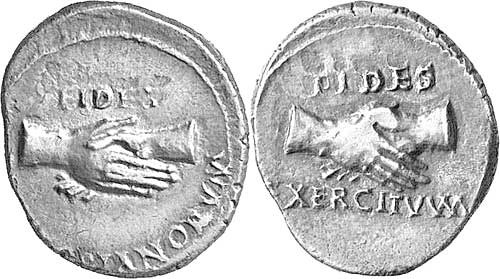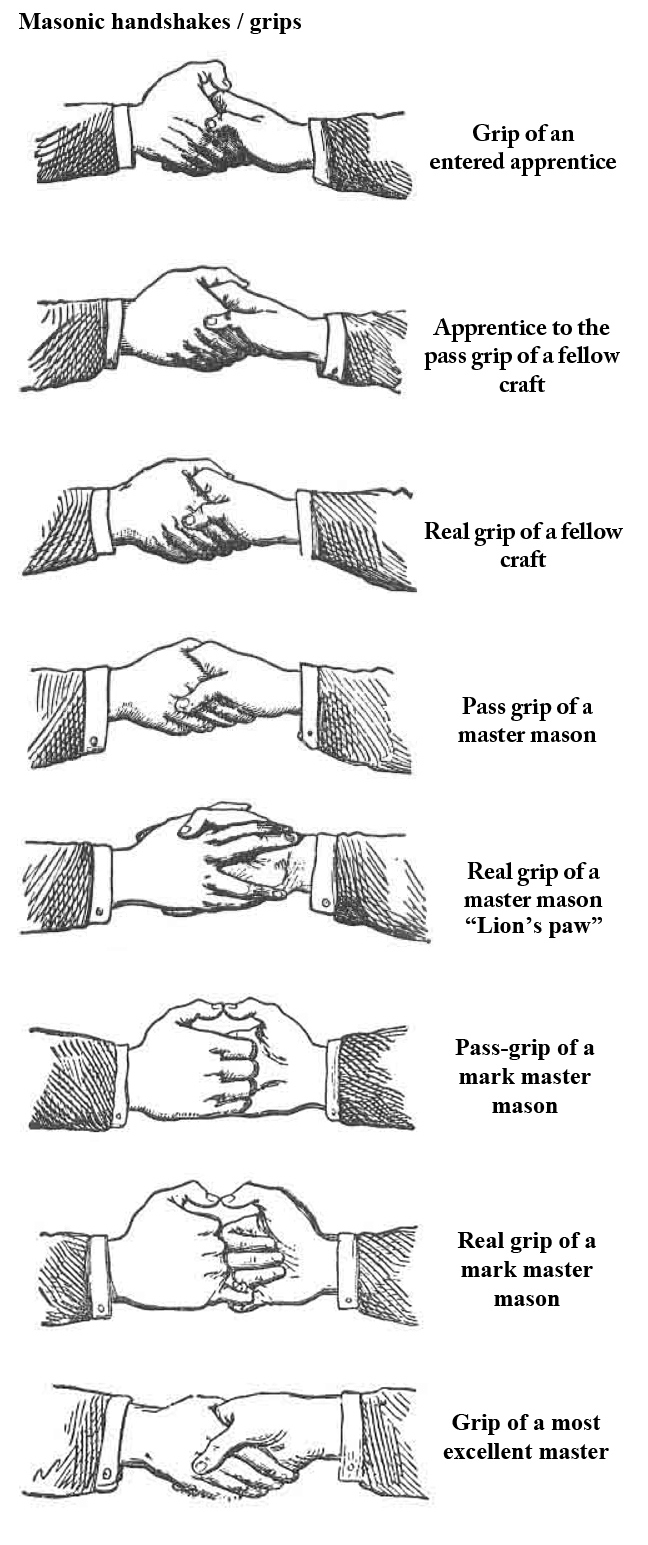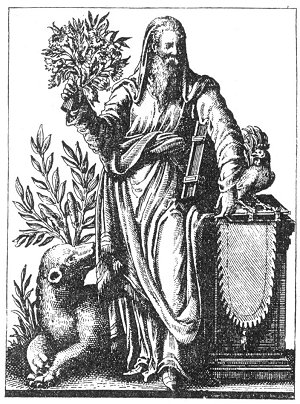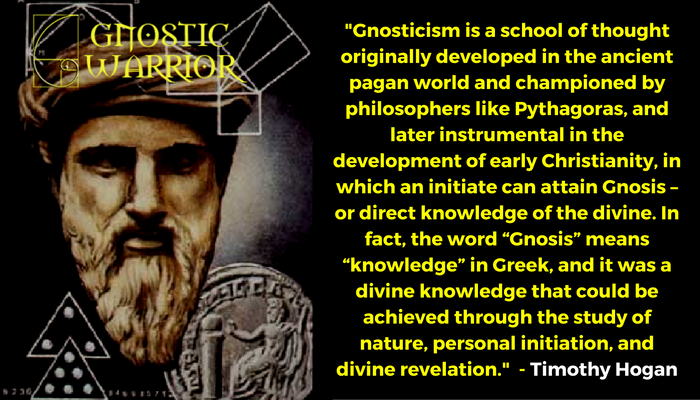“Offer not your right hand easily to everyone” – Pythagoras
33rd Degree Freemason and Sovereign Pontiff of the Scottish Rite, Albert Pike had written tha the clasped hands was another symbol which was used by Pythagoras.
Over time, the handshake of the Gnostic Pythagoreans became the secret Masonic handshake of the Freemasons to announce to fellow Brothers they were followers of the Gnosis. Robert Freke Gold explains this fact in “The History of Freemasonry, Its Antiquities, Symbols …, Volume 1
By Robert Freke Gould
It has been maintained, that the intermediaries in passing ou the “Masonic Grip” from the Ancients to the Moderns, were the followers of the Gnosis, amongst whom symbols and tokens for mutual recognition were well known. At least, so we are informed by Epiphanius, whose early experiences as a Manichean (before his elevation to the episcopate), specially qualify him to enlighten us on this point.
Iamblicus: “The meaning of this symbol is, do not draw up, nor endeavor to raise, by extending your right hand, the unadopted and uninitiated. It also signifies that the right hand is not to be given easily even to those who have for a long time proved themselves worthy of it, through disciplines, and doctrines, and the participation of continence, the quinquennial silence/ and other probationary trials.”‘ It has been maintained, that the intermediaries in passing ou the “Masonic Grip” from the Ancients to the Moderns, were the followers of the Gnosis, amongst whom symbols and tokens for mutual recognition were well known. At least, so we are informed by Epiphanius, whose early experiences as a Manichean (before his elevation to the episcopate), specially qualify him to enlighten us on this point. On the arrival of any stranger, he says, belonging to the same belief, they have a sign given by the man to the woman, and vice versd. In holding out the hand, under pretence of saluting each other, they feel it and tickle it in a particular manner underneath the palm, and so discover if the new comer belongs to the same sect.’
At least, so we are informed by Epiphanius, whose early experiences as a Manichean (before his elevation to the episcopate), specially qualify him to enlighten us on this point. On the arrival of any stranger, he says, belonging to the same belief, they have a sign given by the man to the woman, and vice versd. In holding out the hand, under pretence of saluting each other, they feel it and tickle it in a particular manner underneath the palm, and so discover if the new comer belongs to the same sect.’ The preferable opinion, however, would seem to be that recognition or salutation by means of a “grip” or “band-shaking” is a common feature of many religious and social systems, and is especially prevalent amongst the Eastern people. To this day the Parsees of Western India, after prayers on Pappati or New Year’s Day, visit their friends and relations, when the Hamma-i-jour or “joining of hands” is performed.’ A symbolic language appears to have existed in the old monasteries, the signs not being optional, but transmitted from antiquity, and taught like the alphabet.”
Pike had written, “It represented the number 10, the sacred number in which all the preceding numbers were contained; the number expressed by the mysterious Tetractys, a figure borrowed by him and the Hebrew priests alike from the Egyptian sacred science, and which ought to be replaced among the symbols of the Masters degree, where it of right belongs.
The Hebrews formed it thus, with the letters of the Divine name:
The Tetractys thus leads you, not only to the study of the Pythagorean philosophy as to numbers, but also to the Kabalah, and will aid you in discovering the True Word, and understanding what was meant by “The Music of the Spheres.” (Morals and Dogma: Scottish Rite in Freemasonry By Albert Pike – Page 36)

Moe is the founder of GnosticWarrior.com. He is a father, husband, author, martial arts black belt, and an expert in Gnosticism, the occult, and esotericism.


![How the South Saxons received Eadbert and Eolla, and the West Saxons, Daniel and Aldhelm, for their bishops; and of the writings of the same Aldhelm [705 A.D.] | Book 5 | Chapter 17 How the South Saxons received Eadbert and Eolla, and the West Saxons, Daniel and Aldhelm, for their bishops; and of the writings of the same Aldhelm [705 A.D.] | Book 5 | Chapter 17](https://www.gnosticwarrior.com/wp-content/plugins/contextual-related-posts/default.png)



